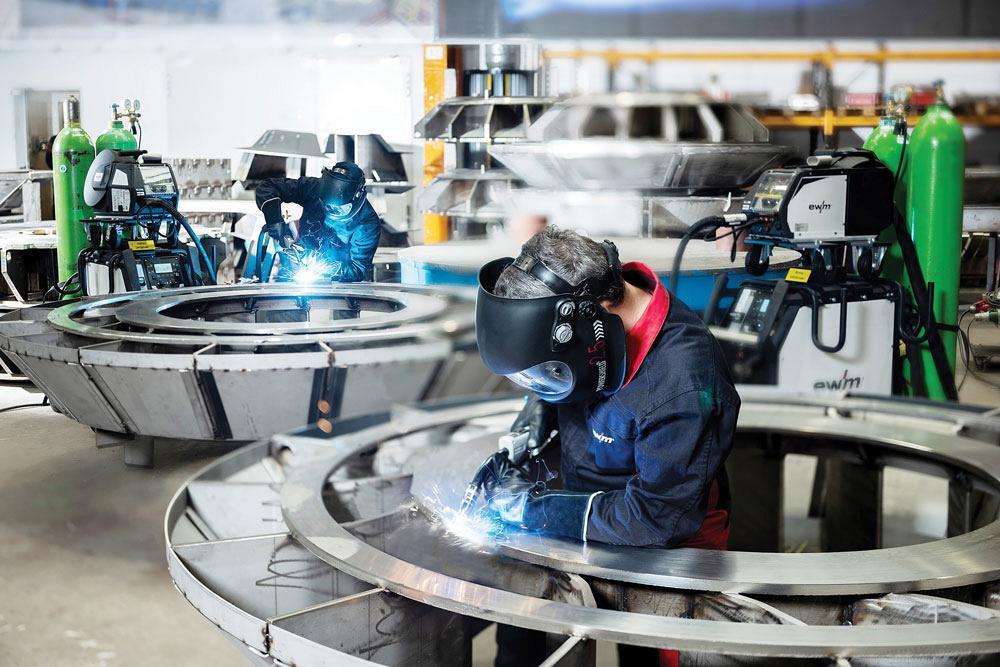Production Welding
Production welding refers to the process of joining metal components together using various welding techniques for large-scale manufacturing operations.
It involves the application of heat and pressure to melt and fuse the base metals, creating a strong and permanent bond.
Production welding is commonly used in industries such as automotive, aerospace, shipbuilding, construction, and fabrication. It plays a crucial role in assembling structural components, fabricating machinery, and manufacturing complex metal products.
Skilled welders, along with specialized welding equipment and techniques, ensure the integrity and quality of the welded joints.

Benefits of Production Welding:
Production welding, which refers to the welding processes used in manufacturing and industrial production settings, offers several benefits. Here are some key advantages of production welding:
Efficiency
Production welding methods are designed to maximize efficiency and productivity. They are typically automated or semi-automated, allowing for high-speed and continuous welding. This results in faster production cycles and increased output.
Consistency and Quality
Production welding techniques aim for consistent and repeatable results. Automated systems can precisely control welding parameters such as heat input, travel speed, and electrode positioning, ensuring consistent weld quality throughout the production run. This leads to improved product quality and reliability.
Increased Safety
Automation in production welding reduces the need for manual intervention, minimizing the exposure of workers to hazardous welding environments. By reducing direct contact with welding operations, production welding contributes to improved workplace safety.
Time Savings
The use of automated or mechanized welding techniques in production significantly reduces welding cycle times compared to manual welding methods. This time-saving factor contributes to overall shorter production schedules and faster time-to-market for products.
Cost-effectiveness
By streamlining the welding process and achieving high productivity rates, production welding helps reduce labor costs per unit. Automated welding systems can operate continuously, minimizing downtime and maximizing the utilization of equipment and resources.
Accuracy and Precision
Production welding often employs advanced technologies such as robotic welding systems, laser welding, or electron beam welding, which offer high levels of accuracy and precision. These methods can achieve tight tolerances, produce clean welds with minimal distortion, and join complex or intricate parts with great accuracy.
Scalability
Production welding methods are scalable, allowing for high-volume production as well as flexibility to adapt to changing production requirements. Welding systems can be easily adjusted to accommodate different product designs, materials, or production volumes, making them suitable for a wide range of manufacturing applications.
Documentation and Traceability
Production welding often includes quality control processes that involve documentation and traceability. This enables the tracking of welding parameters, inspection results, and welder qualifications, ensuring compliance with industry standards, regulations, and customer requirements.

